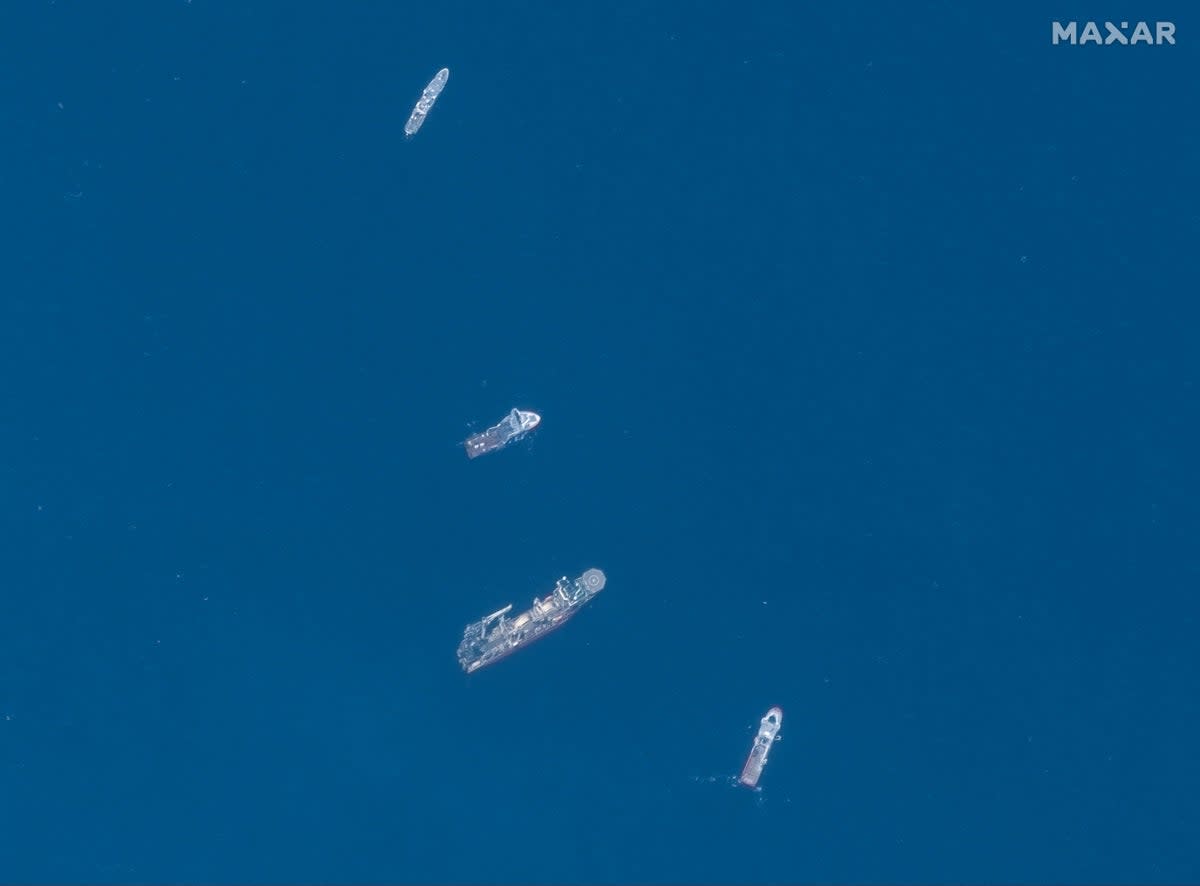Titanic sub likely imploded ‘hours’ before search launched, Coast Guard says
The Titanic tourist sub that was lost with five passengers aboard near the wreck of the famed liner likely imploded hours before a massive search and rescue was even launched, says the US Coast Guard.
OceanGate Expedition’s Titan submersible began its journey to the wreck site, which sits at a depth of 12,500ft at the bottom of the Atlantic Ocean, on Sunday morning. About an hour and 45 minutes later, the Titan lost contact with its surface ship, the Polar Prince.
Rear Admiral John Mauger of the US Coast Guard said on Thursday that Titan had suffered a “catastrophic loss” of its pressure chamber, leading to the deaths of everyone inside it.
Follow the latest updates on the missing Titanic submarine here
“Right now it is too early to tell with that,” he said when asked if the Coast Guard could give a specific time on the sub’s fatal implosion.
And he added: “This was an incredibly complex case and we are still working to develop the details of the timeline involved in this casualty and response.”
He stated that search and rescue teams from Canada and the US had been listening for noises from the ocean floor for more than 72 hours and had not heard the fatal implosion that destroyed Titan.
“We know that during the search we have had sonar buoys in the water nearly continuously and have not detected any catastrophic events.”
And he went on to call the remote area of the Atlantic where the search had taken place an “Incredibly difficult and dangerous environment to work in.”
“This is an incredibly complex operating environment on the sea floor over two miles beneath the surface,” he said.

Debris from the Titan was found by a remote operated vehicle (ROV) around 1,600ft from the bow of the Titanic and the families of the victims were immediately informed, officials said.
Rear Admiral Mauger said that the search and rescue teams had mobilised the appropriate equipment to try and find the Titan submersible.
“So we really had the right gear on-site and worked as swiftly as possible to bring all of the capabilities that we had to bear to this search and rescue effort,” he said.
And he insisted that teams had been “able to mobilise an immense amount of gear to the site in just really a remarkable amount of time.”

Pakistani businessman Shahzada Dawood and his 19-year-old son Suleman Dawood were lost along with CEO and founder of OceanGate Expeditions Stockton Rush, British billionaire explorer Hamish Harding and renowned French diver Paul-Henri Nargeolet.
Titan began its journey to the wreck site, which sits at a depth of 12,500 in the Atlantic Ocean, on Sunday morning.
About an hour and 45 minutes later, the Titan lost contact with its surface ship, the Polar Prince. The Titan was equipped with a four-day emergency oxygen supply.
Officials say that a Canadian aircraft involved in the search detected intermittent “banging” noises from the vicinity of its last known location.
Mr Dawood and his son, who were both British citizens, are part of a prominent Pakistani family, with investments in the country’s agriculture and industry sectors.
